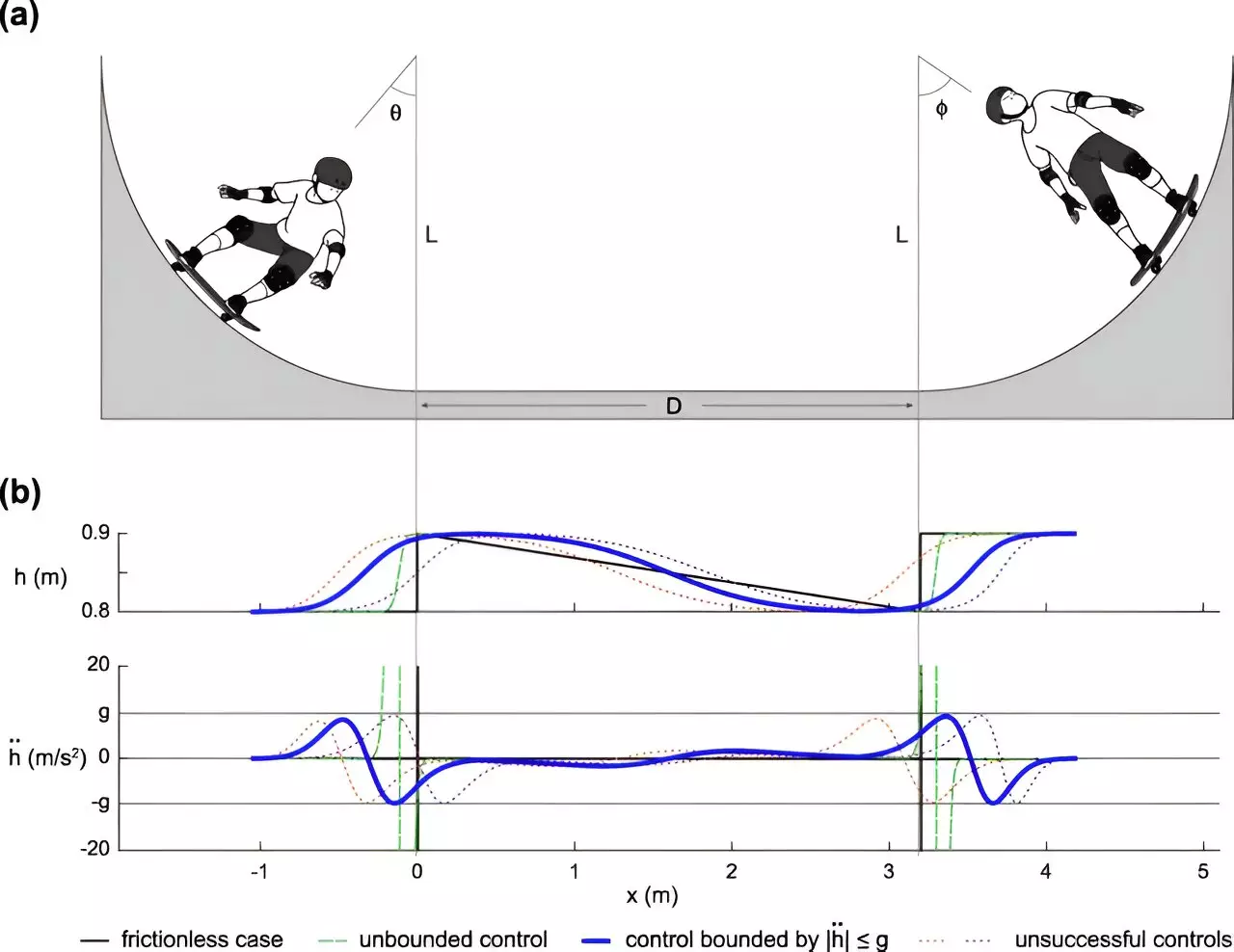The captivating world of skateboarding intertwines art and physics, particularly in the context of performing tricks on a half-pipe. Recent research from a collaborative team at ETH Zürich, alongside notable institutions in Japan, has opened new avenues in understanding the dynamics of skating through the lens of advanced mathematics. Their compelling investigation culminated in a paper published in the esteemed journal, Physical Review Research, revealing not just the underlying principles of motion but also the potential to revolutionize robotics and balance mechanisms.
At the heart of this study lies a thoughtful analogy: the simple act of swinging. By likening the pumping action of a skateboarder to the motion of an individual on a swing, researchers were able to architect a comprehensive model of the physics at play during a skateboarder’s maneuvers in a half-pipe. This analogy serves as a clever gateway, allowing for a deeper exploration of motion through a familiar child’s game, thereby grounding complex physics in everyday experience.
Half-pipes themselves are specifically designed structures, usually crafted from wood or cement, that feature a valley-like shape flanked by steep, symmetric sides. For skateboarders, these formations are not merely surfaces, but dynamic arenas where gravity and body mechanics intersect. The movement begins as skaters roll down one side, gaining momentum before transitioning across the low point and up the opposite incline.
The Pumping Mechanism Explained
As skateboarders navigate this structure, they execute what is known as “pumps.” This action is pivotal for maintaining velocity and altitude within the half-pipe. Essentially, these pumps require the skater to adjust their body position strategically — crouching while descending into the valley and then exerting upward force at the ramp’s curve. This intricate dance of movement mirrors the fundamentals of physics seen in swings, where a similar rhythmic action is necessary to keep the swing moving.
The impressive feat of converting gravitational potential energy into kinetic energy while simultaneously manipulating one’s body mass becomes crucial to transcending mere motion and achieving aerial performance. The scientists recognized that skaters who effectively harness this energy can leap off the half-pipe’s edge, attaining remarkable heights.
Armed with video analysis of real skateboarders and existing physics models focused on swings and pendulums, the researchers endeavored to develop a model that incorporated unique attributes of skating. These included gradual adjustments of mass in relation to the board’s angle and the ramp’s surface, intricacies that reflect the complexity of human kinetics.
Yet, alongside the triumph of developing this model came the acknowledgment of its limitations; while theoretically sound, the findings yielded an optimal pumping technique that, when applied in practice, would paradoxically launch the skater off the ramp, suggesting a disparity between theoretical models and real-world applications. This paradox speaks to the challenges of translating mathematical predictions into physical reality, particularly in sports that emphasize human intuition and adaptability.
Broader Implications for Robotics
The ramifications of this research extend beyond skateboarding, hinting at innovative applications in robotics. The team conclude that their sophisticated model offers valuable insights that could assist in designing robots capable of traversing uneven terrain. By understanding the mechanics of balance and motion as demonstrated in skating, engineers could develop machines that respond dynamically to their environments, much like skilled skateboarders.
This research not only uncovers the underlying physics of skateboarding but also highlights the potential for interdisciplinary collaboration between mathematics, engineering, and athletic culture. By embracing a model that reflects the synergy of body mechanics and gravitational dynamics, the team’s findings promise to influence both the realms of sport and technology, fostering continued exploration into the fascinating intricacies of motion. As they further refine their model, the bridge between playful activity and serious scientific inquiry grows ever more robust, illuminating the simple joys of skateboarding while paving the way for groundbreaking advancements in robotics.

